Heritage Castro Marim
Between castles and walls, Castro Marim is presented as a timeless destination and ready to be explored.
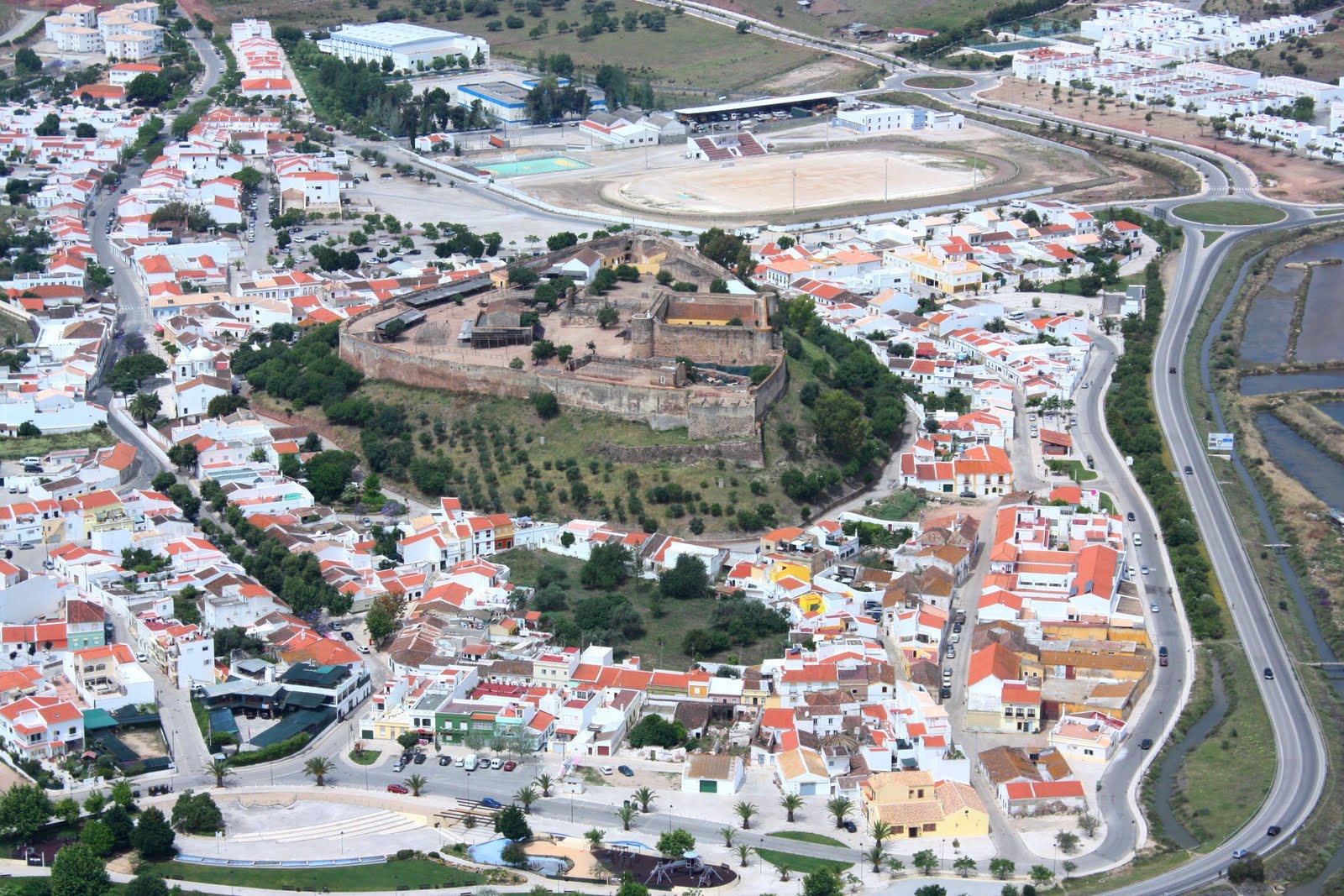
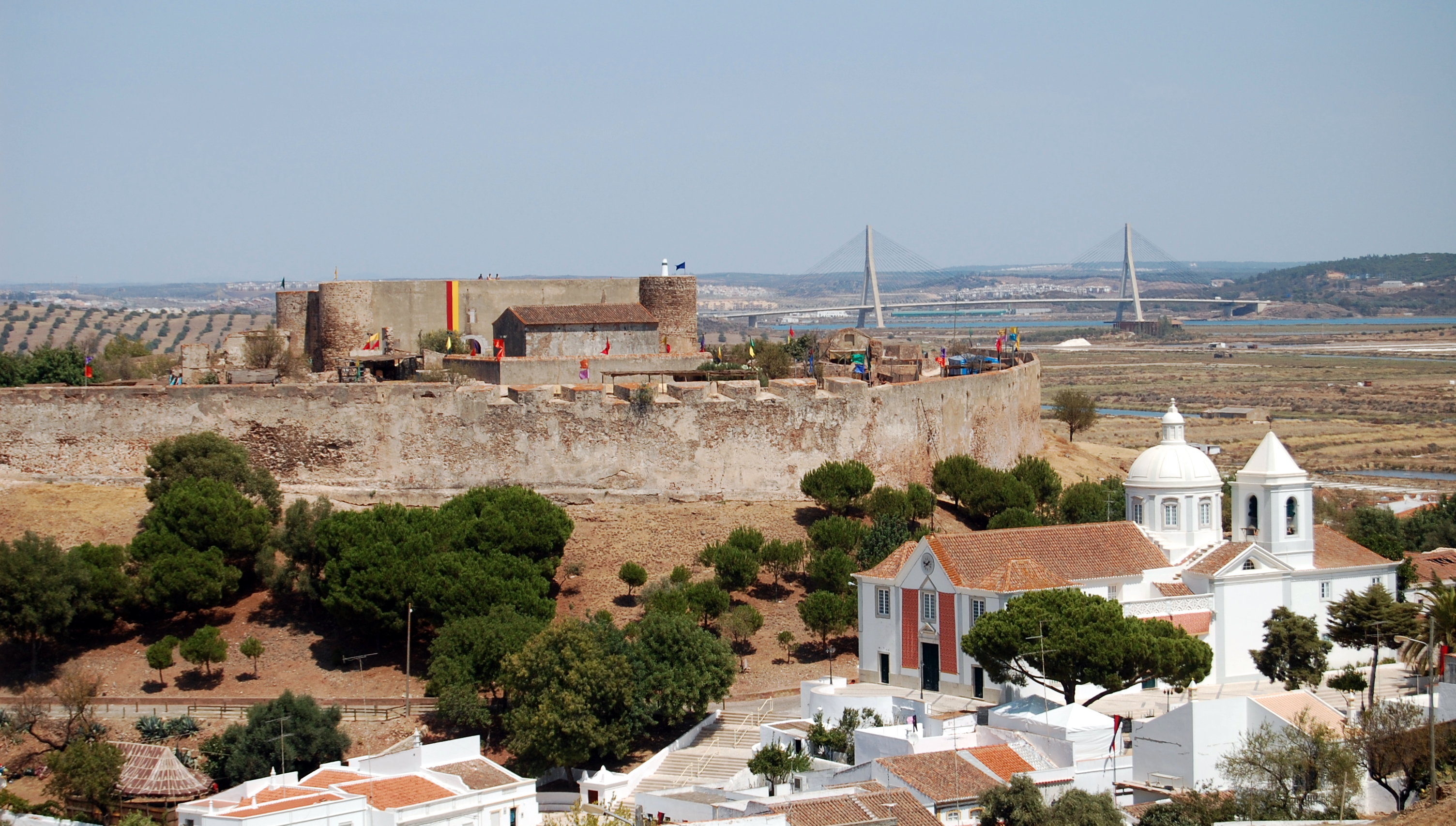
Castle of Castro Marim – the town of Castro Marim is set on a hill Castle, one of the invocations that the Middle Ages introduced in the Portuguese countryside, on the right bank of the Guadiana river. This being the first fortress of Castro Marim, consisted in a family castro or settlement of the Neolithic period, lifted the crown that hill, which due to its topographical configuration and strategic location, the town of Castro Marim was populated by various peoples, notably by Phoenicians , Carthaginians, Vandals and Moors defeated, when the conquest of the village by D. Paio Peres Correia in 1242. in the year 1277, D. Afonso III granted him a charter with great privileges to attract population, thus raising the medieval about wherein the village developed and growing. Later, in the reign of King Dinis, offsetting the loss of Ayamonte who went to the area of Castile, this had strengthened the fortification, expanding it with the construction of the Old Wall, shelter and protection of the population, attracting the with the confirmation and extension of the privileges granted by his father Alfonso III, then giving a new a charter in 1282. in the process of conquest of the Algarve, one can not overlook the importance of the role of the Religious Military Orders, as Castro Marim I had a geo-raiana position could attract with the king’s help Dinis and the papal bull established by Pope John XXII, the Order of Santiago, who has inherited the assets of the Knights Templar disbanded in 1321, installing its headquarters in the Castle Castro Marim in 1319 until 1356, the year it was transferred by order of D. Pedro I, to take due to the cessation of fighting against the Moors and a progressive area of disrepute. Since then, the importance of this Castle was declining, making the village began to depopulate. With the XV century entrance and the increase in overseas campaigns, the Portuguese Crown found in the Algarve the best geographical and strategic position, the proximity to North Africa, thus keeping more easily these squares, controlling them and controlling privateers attacks from the south or from neighboring Spain. Thus, Castro Marim became a more and more important, getting one of the main squares of war during the deployment of our troops overseas, losing its peak relative to other war courts Algarve during the sixteenth century. In the reign of King Manuel I, with the new charter Foral assigned to this village in 1504, began restoration work and defense of the castle, which were aimed at two objectives in support of overseas conquests and surveillance of possible pirates attacks this village was subject. Inside the walled enclosure, stood the ruins of the Church of Santiago, primitive matrix of the village, built in the fourteenth century, the Church of Santa Maria and the ancient Church of Mercy, with the Arms door, which served the people until the sixteenth century at which time the village began to grow out of the walled enclosure, meaning the increase of land. Thus, it was necessary the increment during the fifteenth century abaloartadas structures at the behest of John IV, during the Wars of the Restoration in 1640, given the military importance of this point, restore the castle and make new works of fortification, building strong St. Sebastian and Ravelin / Fort St. Anthony.
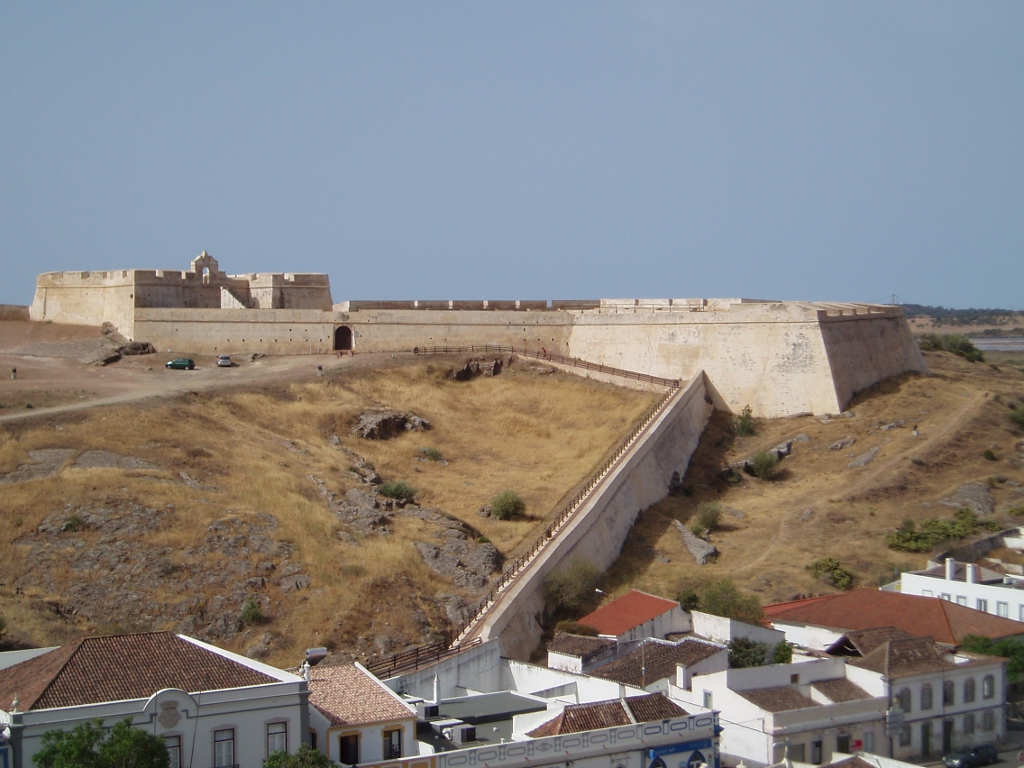
Fort of S. Sebastião – occupies the same site of the chapel dedicated to St. Sebastian, this fort is the best preserved example of that was the broader process of renewal of the defensive system of the village in the mid-seventeenth century. At the behest of King D Joao IV, its construction is due to the scope of the Restoration Wars with Spain and will soon have been started in 1641, which proves the importance of this point in the territory. This project put into practice transformed the old medieval castle in the most important military square in the Algarve, a fact reinforced by the strategic location due to the boundary line. The strong plant adapted to the hill which was implemented by setting an irregular walled enclosure, which includes five bastions and the main door faces north, precisely in the direction of the town and castle. Its close relationship with the castle is one of the most important aspects of the works in the village in the seventeenth century, to the extent that the new military system locale does not waived the old walled enclosure, but integrated it into the new structure, constituindo- A complementarity between ancient and modern here of real expression.
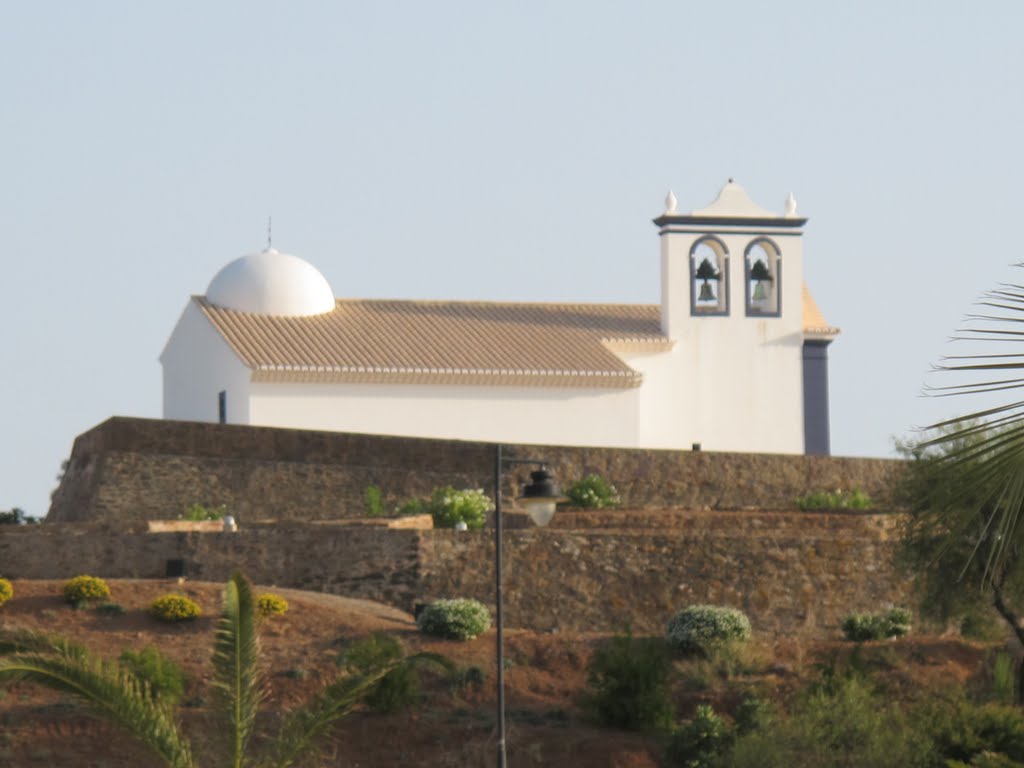
Hermitage and Ravelin of Santo António – erected by order of King John IV, a strong second, smaller, of vital strategic importance, was also built in the hill of the Zambujal Rock, east of the village, but connecting to both the old castle or the core of San Sebastian. It was the St. Anthony Ravelin, a small dominant fortification on the course of the Guadiana and erected precisely to control the mouth of the Rio Grande do Sul. Within this ravelin, built up the Chapel of St. Anthony, a good baroque building architectural quality chancel square bounded by strong pillars-corners.
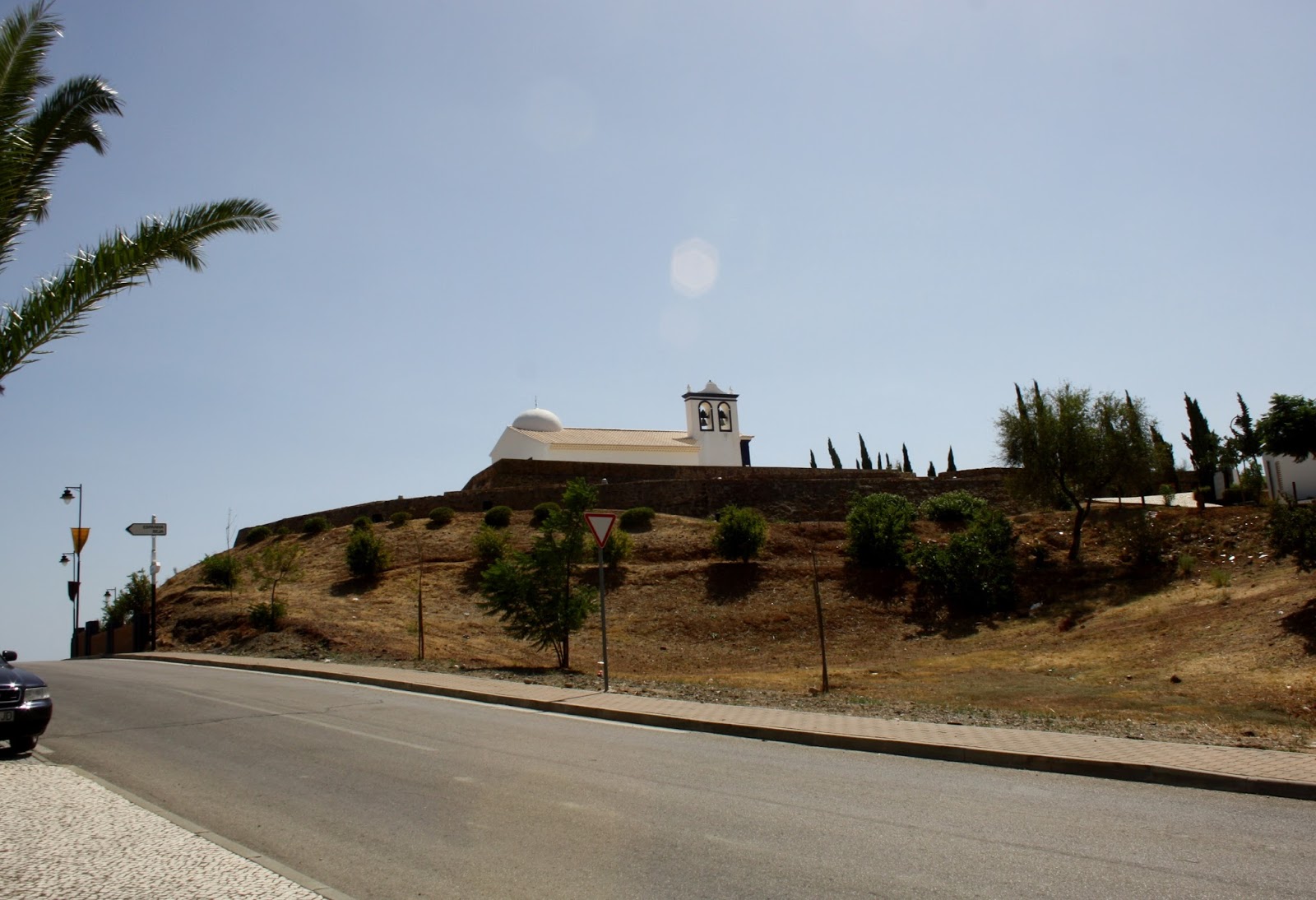
Hill’s Ravelin of Santo António – their recovery and rehabilitation completed in 2009 for the rehabilitation of the military structure of the Ravelin, the Chapel of St. Anthony, Mill and St. Anthony’s Square, as well as the creation of a support structure for the tourist reception of the county, the center Territory Interpretation, which promotes Castro Marim cultural development, leading also to the construction of an amphitheater outdoors, a garden Andalusian inspiration and Traditional Gardens spaces.
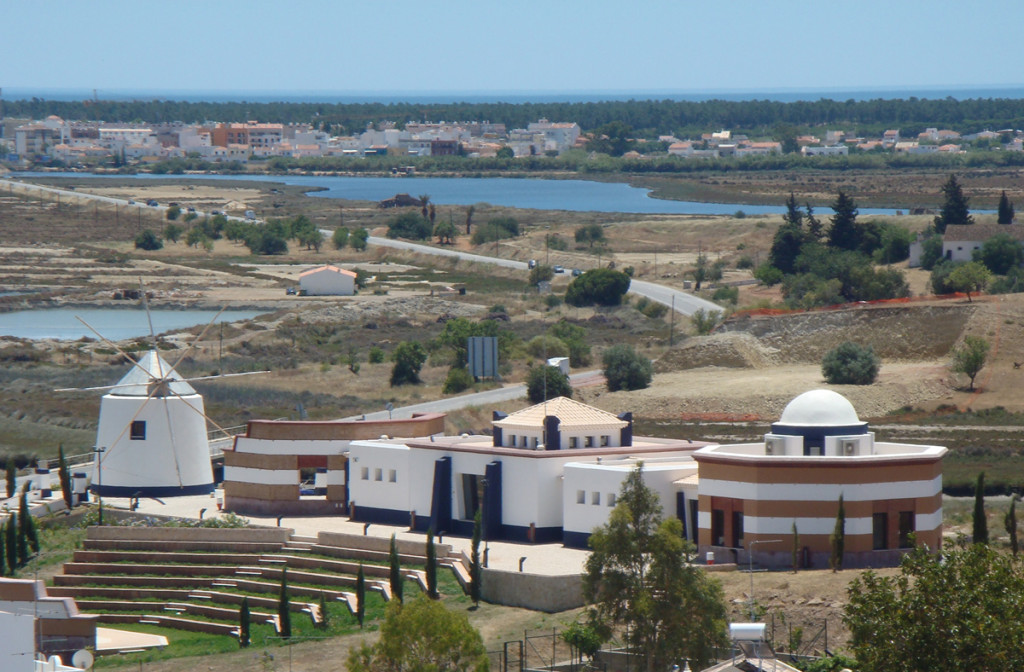
Territorial Interpretation Centre – a major area of reception and information to visitors and simultaneously starting point for cultural itineraries and visit to the territory of Castro Marim. It is a privileged viewpoint to the territory, both for its geographical location and the way it was designed with visibility to 360 degrees. A natural viewpoint which adds a virtual viewpoint of the whole county that informs visitors and encourages visits to different heritages: the History, the Natural, the of Knowledge.
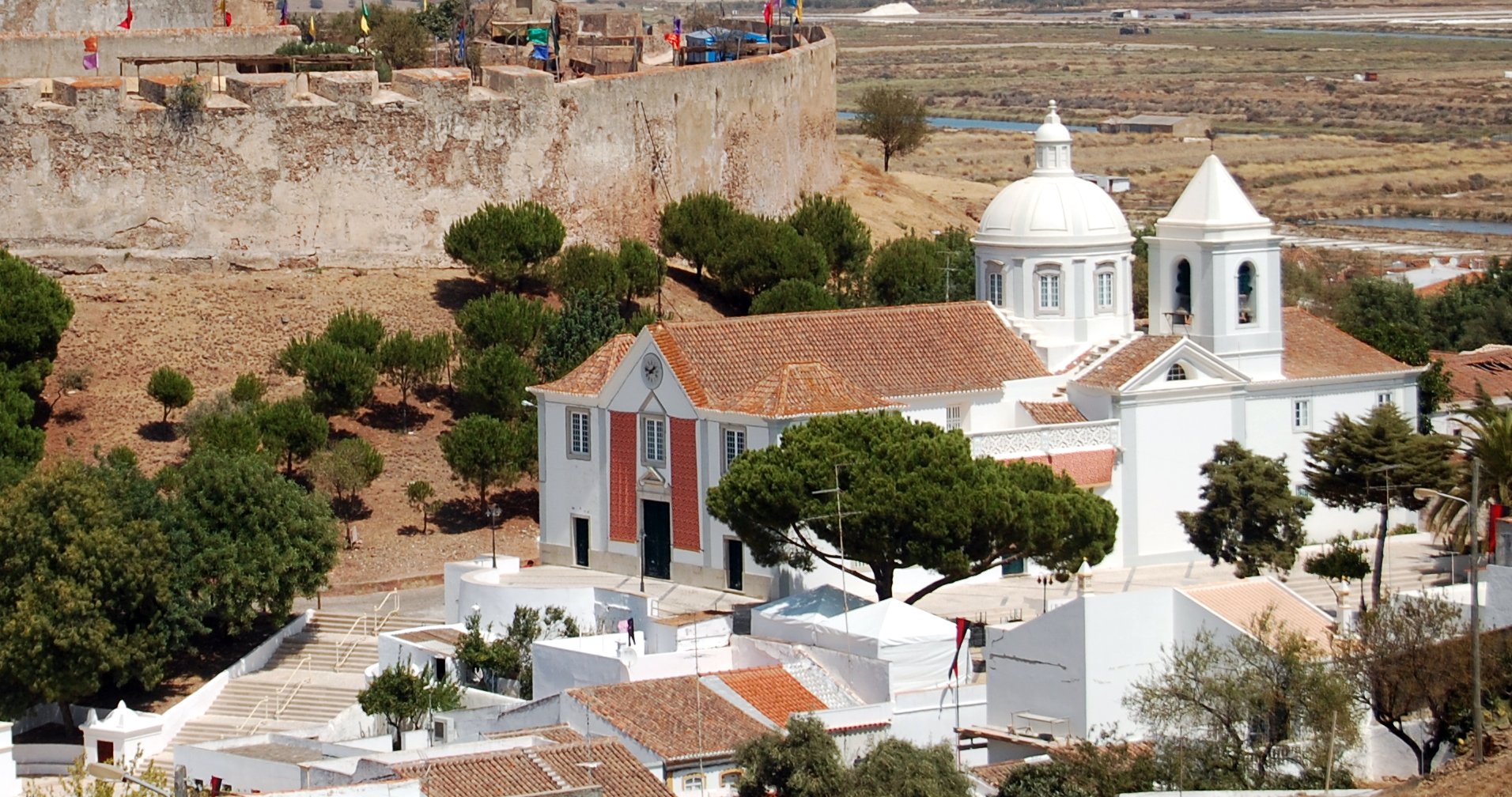
Nossa Sra dos Mártires Church – when Castro Marim became one of the villages that were generated around a generating element, the Castle, widening the valley that separates the Cerro Cabeço that later established the Fort of San Sebastian, and in the sixteenth century was erected a chapel called Our Lady of Martyrs, by the inability of the village of Matrix, who was inside the walls, hold all the faithful. This hermitage visited several times during the sixteenth century, the Order of Santiago, which had had its headquarters in the Castle of Castro Marim between 1319-1356, when it was moved to the town of Tomar. After the earthquake of 1755, responsible for the collapse of the Church of Santiago, this was made parish chapel of the village, built by Lopo Mendes de Oliveira, Commander of the Order of Christ and Alcaide of this castle. But because of its smallness was sent to restore and extend between the late eighteenth and early nineteenth century, and the works were concluded in 1834, under the responsibility of the architect João Lopes of the Rosary, which has several architectural campaigns of great interest: porch Renaissance; dome and vault of lunettes of the Baroque chapel; neo-Manueline elements in the fascia overlying the porch. This church is composed of a longitudinal plan of a single nave, choir-high with wooden belly balustrade, transept and chancel two spans, possessing several examples of imaginary of the sixteenth and eighteenth century wood and altarpieces at the altar chancel and transept in marbled wood and polychrome. Deal this Mother with the Castle, the north and the Fort of San Sebastian, the south, the frame that makes up the image of Castro Marim, denouncing the simple lines of all the houses that surrounds them.
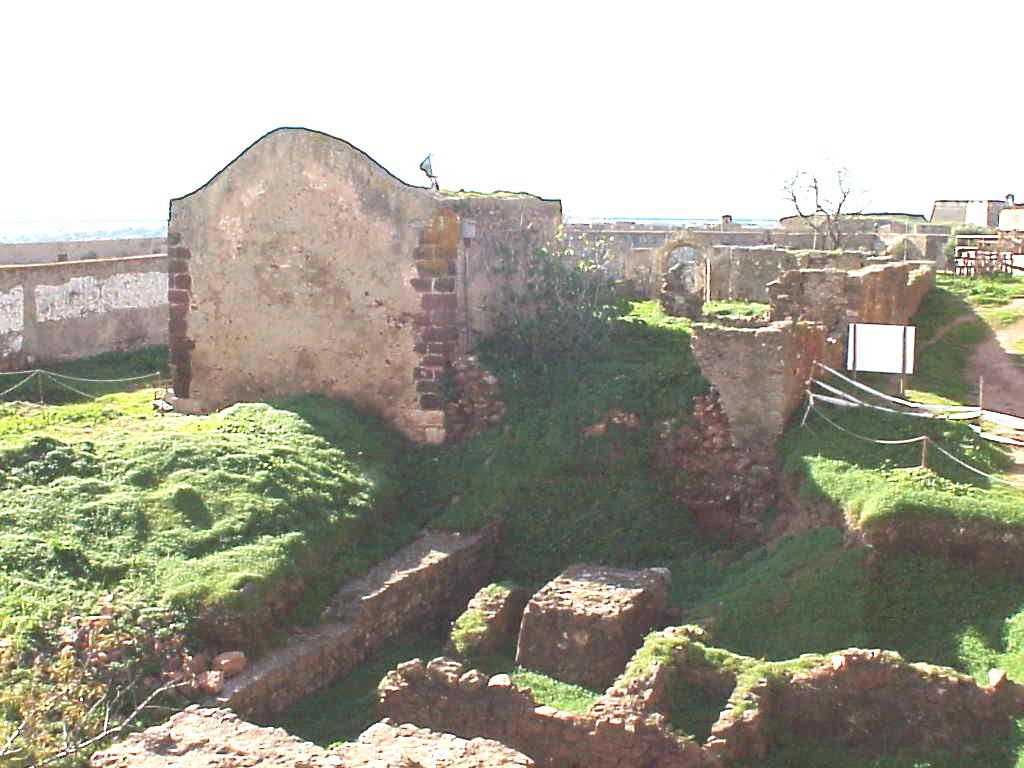
Santiago Church – within the walls of Castro Marim, there was a bell that would be the Church of Santiago built in the fourteenth century, the parish of the parish in 1320 already covered the whole area of the county. It was the primitive matrix of the village, it was in the Convent of the Knights of the Order of Christ in 1504 turned into military barracks. This was accompanied by various Church Visitations, including the 1518, 1534, 1535, 1538, 1554 and 1565. These gave their location between Levante and West, square chapel with access by three steps, with domes and retábulo- mor defined by five panels in half with the image of Santiago, the figure on the left was St. John and on the other hand, S. Sebastian, and although saints suffered location changes. After the earthquake of November 1, 1755 there was only a wall of the church, so from that time the Church became the Chapel of Our Lady of Martyrs, located outside the walls. And after this catastrophe Castro Marim lost the influential position he had occupied for years. Today this church is composed of entrance porch in capialço overlaid by Santiago cross carved, churchyard and chancel without vault and a quadrangular window.
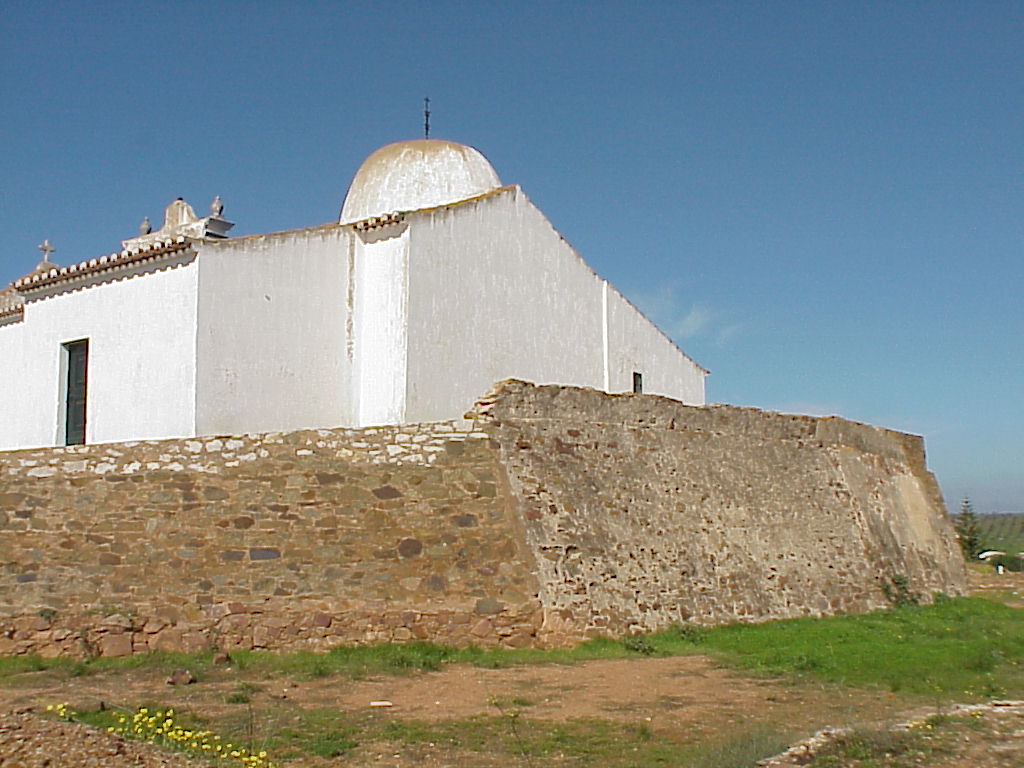
São Sebastião Church – the period of the Wars of the Restoration in 1640, with the struggles around the border squares who regain their lost importance, Castro Marim again had higher growth that had once lost, and with it the Holy House of Mercy acquired new importance. They amounted to other bastions, one of which was the Chapel of St. Sebastian, razed during the works of the fort that gave the name. So that the village would not be without temple, John IV built a the same invocation Holy Chapel in the year 1650. This new temple situated next to one of the village entrances, became the new church of Mercy and institution-to relocated there in 1838.
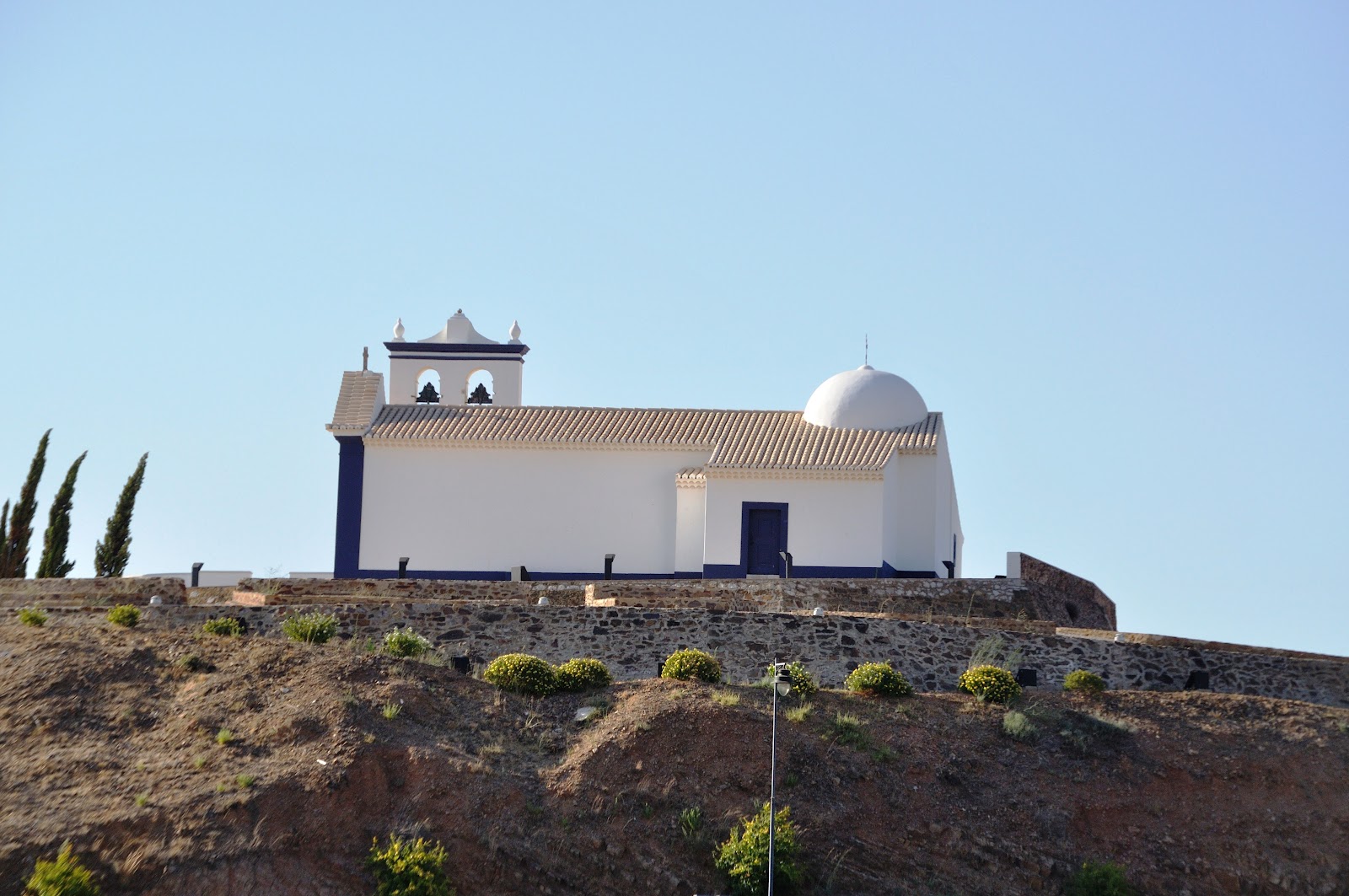
Santo António Church – with increasing land, better security conditions, population growth and the progressive economic development linked to maritime activity, there was the village of expansion outside the medieval walled enclosure. This expansion and during the Wars of the Restoration in 1640, resulted in the construction of the Fort of San Sebastian in Cerro Cabeço and St. Anthony’s Ravelin on the hill called Zambujal Rock, surrounding said Chapel of St. Anthony, sent build by D. John IV. These two fortified areas annexed to the castle meant that this village was in the sixteenth century / XVII the square’s most important war of the Algarve.

N. Sr.ª da Visitação Church – belonging in the landscape that is the village of Odeleite, parish of Our Lady. Visitation, which since 1534 is part of the history books and the municipality of Castro Marim. This place was then called Delight place where stood a hill that looked facing the Church of Our Lady of the Visitation. This church was visited by two Visitations, the 1534 and 1565, who described it in its original form. They say this that this temple would have been built after the previous Visitation of 1518, hence derives its internal typology of Mendicant Church, that is, referring to the Gothic period. The 1534 visitation notes that the ceiling of the church was lined with chestnut wood with reeds, and the bell tower existed on the main website, and was going only. The Visitation 1565 tells us that this church was “aredada” of the village, and describe it as follows: refer to the said ceiling church was “scissors madeirado and lined cane”; on the triumphal arch there was a major crucifix; font was left at the entrance and was surrounded by railings; lying at this point, the said parish of customers in the works to put in the village of Revel.
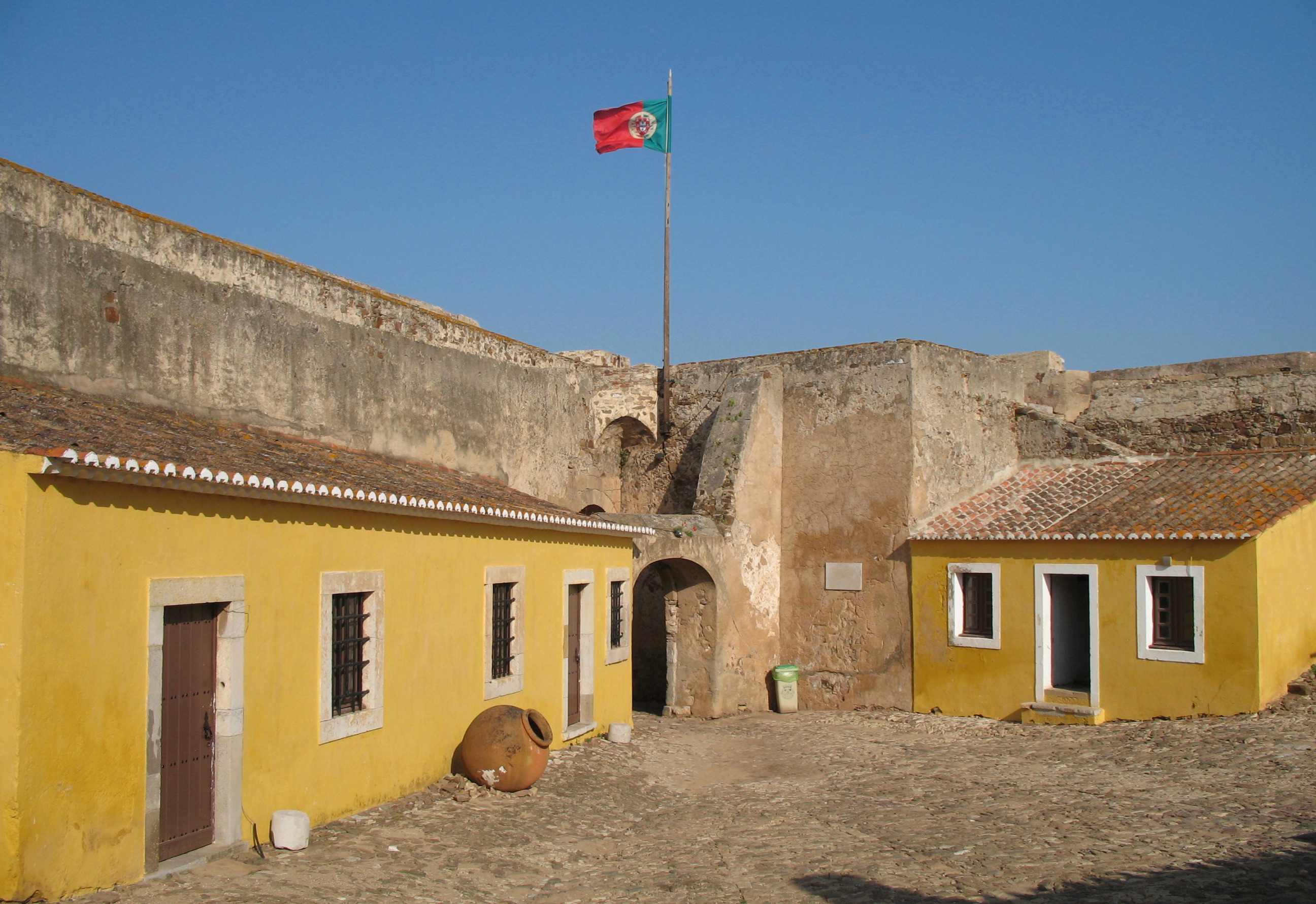
Museum Centre of Castro Marim Castle – a cultural space designed for the enhancement of the archaeological heritage, this shows traces of extensive archaeological excavations in the small hill on which stands the castle of Castro Marim. After the last three decades, these allowed recover abundant evidence of human occupation in various historical periods, from the Late Bronze Age, the Iron Age, the Roman period, among many other historical periods. In existing housing structures, it was possible to find a wide variety of manufactured parts from different sources, including those with food purposes and is representative of the large urban center of import and distribution that was Castro Marim. Subject to a long process of recovery and treatment, the pieces are now displayed at the Museum Centre of Castro Marim Castle, a large, modern space that allows the visitor to know the history of Castro Marim Castle illustrated by the material of the various epochs . At the same time, the opening of this new space increases even more the potential of Castro Marim as cultural tourism focus. This space is open from Monday to Sunday from 10h to 13h – 15: 30h to 17h.



